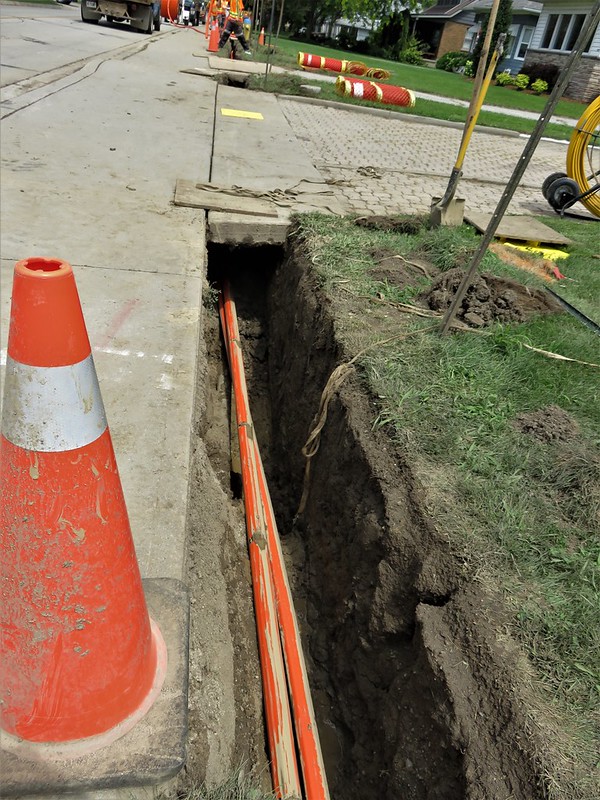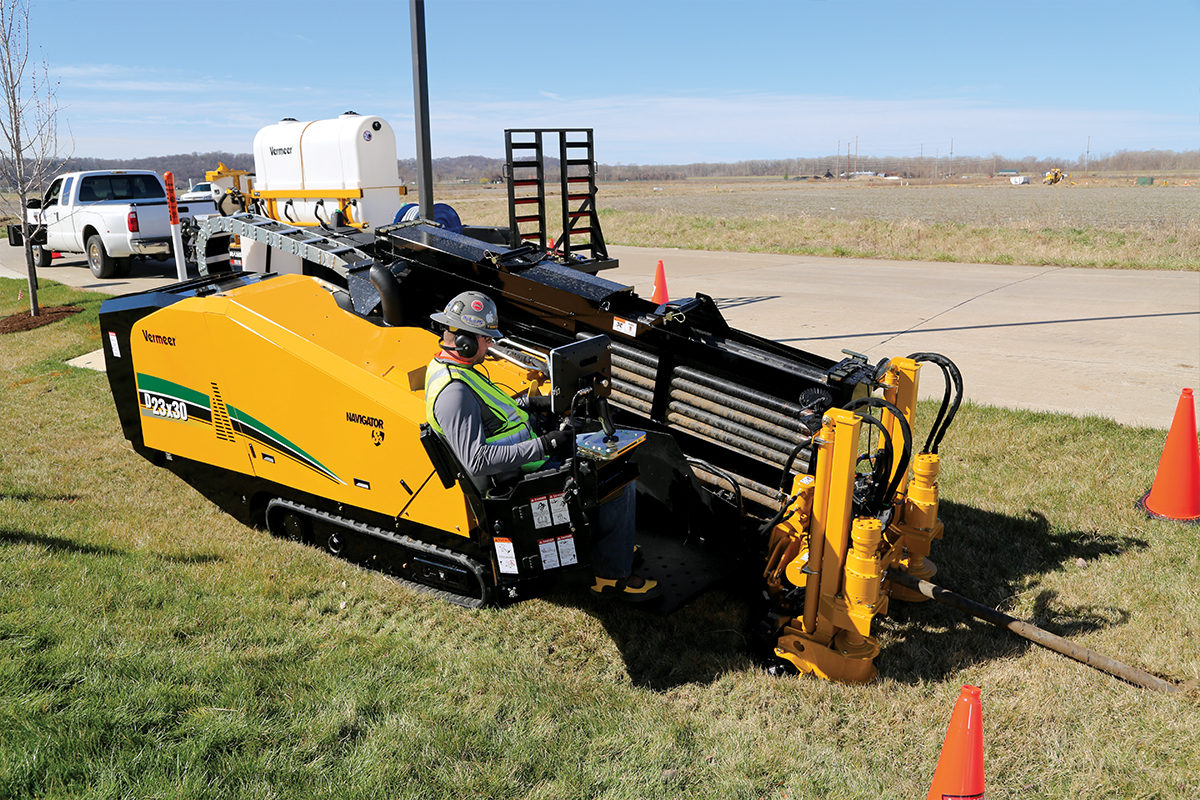When you must lay low voltage cable underground, which is the best route to go, directional boring or trenching? Both have pluses and minuses. But knowing which technique is best for each situation will help to clarify the reasoning.
When to Trench
 Trenching creates a large, deep trough in the ground stretching the entire length of the project. These trenches can vary in length and depth, depending on the size needed for the conduit.
Trenching creates a large, deep trough in the ground stretching the entire length of the project. These trenches can vary in length and depth, depending on the size needed for the conduit.
But trenching is extremely disruptive to the environment and aesthetics of the area. The trench area must be free of pavement, concrete, or large boulders. Your sidewalks, driveways, landscaping, and parking lots will be destroyed.
Trenching leaves the possibility of project disruption due to wet weather. If the soil is wet, it is almost impossible to dig it up.
Why go with trenching? Simple… Price. If safety and site disruption are not issues. Trenching may be the way to go.
 When to Bore
When to Bore
There is a better way. Boring is kind to landscaping as it disrupts only in small sections at the entry points where the conduit is inserted. Thus, it is better for the ecosystem than traditional trenching. It also provides a safer work area as workers cannot to be injured from falling into the trench.
A directional bore drill can be used to place conduit beneath concrete and asphalt covered surfaces, as well as under existing structures. Are you laying different sizes of conduit? With directional boring, you can do this from a single location.
Directional drilling ensures faster installation over the traditional methods. Directional drilling digs under the ground, where there is less dirt to bury and dispose of because less soil is displaced.
 If you decide a bore is in your bet interest, select a contractor with solid experience. And with that experience, make sure that they have the proper equipment for the job. You may want to consider a company that can also do the utility locating. The Wiring Technologies team owns directional boring equipment and a ground-penetrating radar system.
If you decide a bore is in your bet interest, select a contractor with solid experience. And with that experience, make sure that they have the proper equipment for the job. You may want to consider a company that can also do the utility locating. The Wiring Technologies team owns directional boring equipment and a ground-penetrating radar system.
Want to learn more? Check out our web page about Directional Boring.
We Go Beyond the Bore
When selecting a directional bore team, keep in mind that, as a low voltage contractor, we can also pull and test the fiber going into the conduit. Thus, we are a one-stop shop for your needs. Call us for a free quote at (407) 862-6290 ext. 114, or email [email protected]

Recent Comments